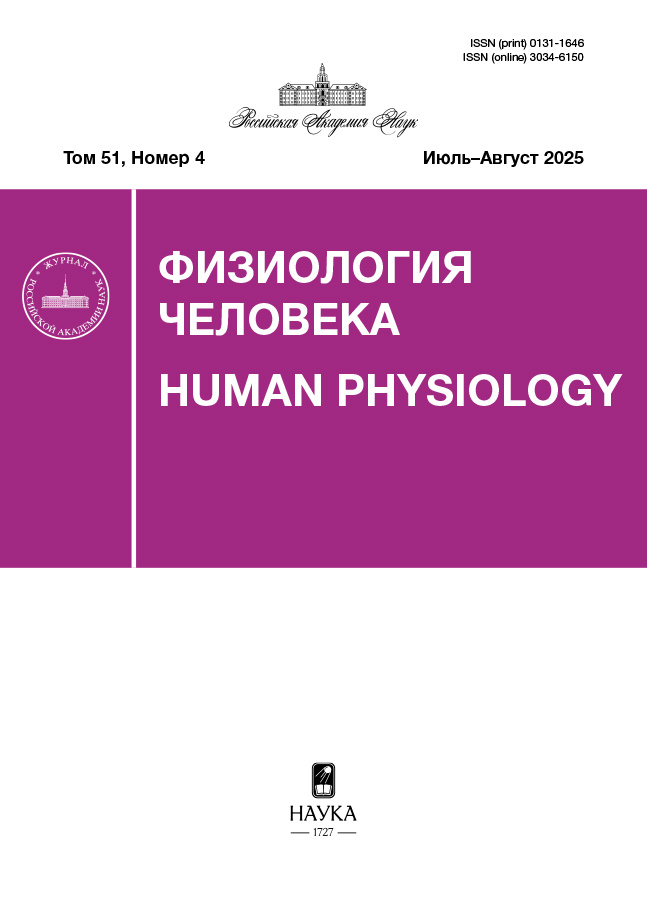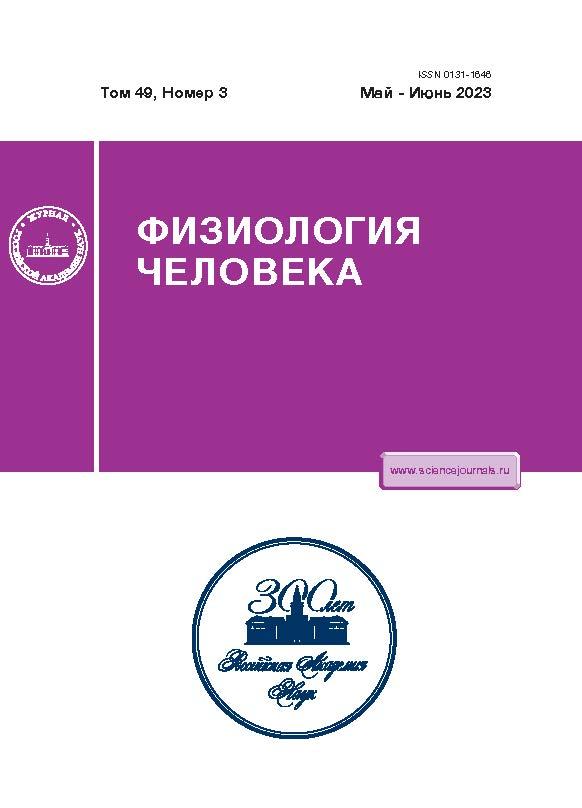The Involvement of Broca’s Area and Its Right-Hemispheric Homologue in Acquiring Abstract and Concrete Semantics: Transcranial Direct-Current Stimulation Study
- Authors: Gnedykh D.S.1, Blagovechtchenski E.D.2, Kostromina S.N.1, Mkrtychian N.A.1, Shtyrov Y.Y.3
-
Affiliations:
- Saint-Petersburg State University
- Pavlov Institute of Physiology, RAS
- Aarhus University
- Issue: Vol 49, No 3 (2023)
- Pages: 78-86
- Section: Articles
- URL: https://rjraap.com/0131-1646/article/view/664019
- DOI: https://doi.org/10.31857/S0131164622600926
- EDN: https://elibrary.ru/GCEHLX
- ID: 664019
Cite item
Abstract
The study compared effects of transcranial direct current stimulation (tDCS) of Broca’s area and of its right-hemispheric homologue on the acquisition of novel concrete and abstract words. Word/concept acquisition was achieved through reading sets of sentences, which incorporated novel words, gradually revealing their meaning through context. Before the learning session, a 15-minute anodal or cathodal stimulation of one of the target areas was applied. Lexical decision task was used to assess the learning outcomes immediately after the learning session and 24 hours later. The results showed a larger number of correct responses after right-hemispheric tDCS, in comparison with that of Broca’s area in the left hemisphere. These results suggest that the right-hemispheric counterpart of Broca’s areas is involved in the processing and acquisition of new concrete and abstract semantics. Furthermore, they demonstrate facilitatory effects of tDCS on the processes of overnight consolidation of newly formed word memory traces.
About the authors
D. S. Gnedykh
Saint-Petersburg State University
Author for correspondence.
Email: d.gnedyh@spbu.ru
Russia, St. Petersburg
E. D. Blagovechtchenski
Pavlov Institute of Physiology, RAS
Email: d.gnedyh@spbu.ru
Russia, St. Petersburg
S. N. Kostromina
Saint-Petersburg State University
Email: d.gnedyh@spbu.ru
Russia, St. Petersburg
N. A. Mkrtychian
Saint-Petersburg State University
Email: d.gnedyh@spbu.ru
Russia, St. Petersburg
Y. Y. Shtyrov
Aarhus University
Email: d.gnedyh@spbu.ru
Denmark, Aarhus
References
- Borghi A.M., Binkofski F. Words as social tools: an embodied view on abstract concepts. N.Y.: Springer New York, 2014. 127 p.
- Fliessbach K., Weis S., Klaver P. et al. The effect of word concreteness on recognition memory // NeuroImage. 2006. V. 32. № 3. P. 1413.
- Borghi A.M. A future of words: language and the challenge of abstract concepts // J. Cogn. 2020. V. 3. № 1. P. 42.
- Pulvermüller F. How neurons make meaning: brain mechanisms for embodied and abstract-symbolic semantics // Trends Cogn. Sci. 2013. V. 17. № 9. P. 458.
- Binder J.R., Westbury C.F., McKiernan K.A. et al. Distinct brain systems for processing concrete and abstract concepts // J. Cogn. Neurosci. 2005. V. 17. № 6. P. 905.
- Desai R.H., Reilly M., van Dam W. The multifaceted abstract brain // Philos. Trans. R. Soc. B: Biol. Sci. 2018. V. 373. № 1752. P. 20170122.
- Mkrtychian N., Blagovechtchenski E., Kurmakaeva D. et al. Concrete vs. abstract semantics: from mental representations to functional brain mapping // Front. Hum. Neurosci. 2019. V. 13. P. 267.
- Broca P.P. Remarques sur le siège de la faculté du langage articulé, suivies d’une observation d’aphémie (perte de la parole) // Bulletin et mémoires de la Société Anatomique de Paris. 1861. № 6. P. 330.
- Sahin N.T., Pinker S., Cash S.S. et al. Sequential processing of lexical, grammatical, and phonological information within Broca’s Area // Science. 2009. V. 326. № 5951. P. 445.
- Tomasino B., Tronchin G., Marin D. et al. Noun–verb naming dissociation in neurosurgical patients // Aphasiology. 2018. V. 33. № 12. P. 1418.
- Fiebach C.J., Schlesewsky M., Lohmann G. et al. Revisiting the role of Broca’s area in sentence processing: syntactic integration versus syntactic working memory // Hum. Brain Mapp. 2005. V. 24. № 2. P. 79.
- Friederici A.D. The neural basis for human syntax: Broca’s area and beyond // Curr. Opin. Behav. Sci. 2018. V. 21. P. 88.
- Heim S., Eickhoff S.B., Amunts K. Specialisation in Broca’s region for semantic, phonological, and syntactic fluency? // NeuroImage, 2008. V. 40. № 3. P. 1362.
- Binder J.R., Desai R.H., Graves W.W., Conant L.L. Where is the semantic system? A critical review and meta-analysis of 120 functional neuroimaging studies // Cereb. Cortex. 2009. V. 19. № 12. P. 2767.
- Schell M., Friederici A.D., Zaccarella E. Neural classification maps for distinct word combinations in Broca’s area // Front. Hum. Neurosci. 2022. V. 16. P. 930849.
- Berkovich–Ohana A., Noy N., Harel M. et al. Inter-participant consistency of language-processing networks during abstract thoughts // NeuroImage. 2020. V. 211. P. 116626.
- Fini C., Zannino G.D., Orsoni M. et al. Articulatory suppression delays processing of abstract words: The role of inner speech // Q. J. Exp. Psychol. 2022. V. 75. № 7. P. 1343.
- Mashal N., Faust M., Hendler T. The role of the right hemisphere in processing nonsalient metaphorical meanings: application of principal components analysis to fMRI data // Neuropsychologia. 2005. V. 43. № 14. P. 2084.
- Moro A., Tettamanti M., Perani D. et al. Syntax and the brain: disentangling grammar by selective anomalies // NeuroImage. 2001. V. 13. № 1. P. 110.
- Friederici A.D., Opitz B., von Cramon D.Y. Segregating semantic and syntactic aspects of processing in the human brain: an fMRI investigation of different word types // Cereb. Cortex. 2000. V. 10. № 7. P. 698.
- Sabsevitz D.S., Medler D.A., Seidenberg M., Binder J.R. Modulation of the semantic system by word imageability // NeuroImage. 2005. V. 27. № 1. P. 188.
- Blank S.C., Bird H., Turkheimer F., Wise R.J.S. Speech production after stroke: the role of the right pars opercularis // Ann. Neurol. 2003. V. 54. № 3. P. 310.
- Scott S.K. The neural control of volitional vocal production-from speech to identity, from social meaning to song // Philos. Trans. R. Soc. B: Biol. Sci. 2022. V. 377. № 1841. P. 20200395.
- Reato D., Salvador R., Bikson M. et al. Principles of transcranial direct current stimulation (tDCS): introduction to the biophysics of tDCS / Practical guide to transcranial direct current stimulation // Eds. Knotkova H., Nitsche M., Bikson M., Woods A. Springer, Cham, 2019. P. 45.
- Roy A.V., Camchong J., Lim K.O. Principles and applications of transcranial electrical stimulation / Engineering in Medicine: Advances and Challenges // Ed. Iaizzo P. Elsevier, 2018. P. 319.
- Bianco G., Feurra M., Fadiga L. et al. Bi-hemispheric effects on corticospinal excitability induced by repeated sessions of imagery versus observation of actions // Restor. Neurol. Neurosci. 2012. V. 30. № 6. P. 481.
- Santarnecchi E., Feurra M., Barneschi F. et al. Time course of corticospinal excitability and autonomic function interplay during and following monopolar tDCS // Front. Psychiatry. 2014. V. 5. P. 86.
- de Vries M.H., Barth A.C., Maiworm S. et al. Electrical stimulation of Broca’s area enhances implicit learning of an artificial grammar // J. Cogn. Neurosci. 2010. V. 22. № 11. P. 2427.
- Fiori V., Cipollari S., Di Paola M. et al. tDCS stimulation segregates words in the brain: evidence from aphasia // Front. Hum. Neurosci. 2013. V. 7. P. 269.
- Rosso C., Valabregue R., Arbizu C. et al. Connectivity between right inferior frontal gyrus and supplementary motor area predicts after-effects of right frontal cathodal tDCS on picture naming speed // Brain Stimul. 2014. V. 7. № 1. P. 122.
- Marangolo M., Fiori V., Gelfo F. et al. Bihemispheric tDCS enhances language recovery but does not alter BDNF levels in chronic aphasic patients // Restor. Neurol. Neurosci. 2014. V. 32. № 2. P. 367.
- de Aguiar V., Bastiaanse R., Capasso R. et al. Can tDCS enhance item-specific effects and generalization after linguistically motivated aphasia therapy for verbs? // Front. Behav. Neurosci. 2015. V. 9. P. 190.
- Matar S.J., Sorinola I.O., Newton C., Pavlou M. Transcranial direct-current stimulation may improve discourse production in healthy older adults // Front. Neurol. 2020. V. 11. P. 935.
- Schimke E.A.E., Angwin A.J., Cheng B.B.Y., Copland D.A. The effect of sleep on novel word learning in healthy adults: A systematic review and meta-analysis // Psychon. Bull. Rev. 2021. V. 28. № 6. P. 1811.
- Liu Y., van Hell J.G. Learning novel word meanings: an ERP study on lexical consolidation in monolingual, inexperienced foreign language learners // Language Learning. 2020. V. 70. P. 45.
- Bakker I., Takashima A., van Hell J.G. et al. Competition from unseen or unheard novel words: lexical consolidation across modalities // J. Mem. Lang. 2014. V. 73. № 1. P. 116.
- Partanen E., Leminen A., de Paoli S. et al. Flexible, rapid and automatic neocortical word form acquisition mechanism in children as revealed by neuromagnetic brain response dynamics // Neuroimage. 2017. V. 155. P. 450.
- Vasilyeva M.J., Knyazeva V.M., Aleksandrov A.A., Shtyrov Y. Neurophysiological correlates of fast mapping of novel words in the adult brain // Front. Hum. Neurosci. 2019. V. 13. P. 304.
- Ihara A.S., Mimura T., Soshi T. et al. Facilitated lexical ambiguity processing by transcranial direct current stimulation over the left inferior frontal cortex // J. Cogn. Neurosci. 2015. V. 27. № 1. P. 26.
- Kurmakaeva D., Blagovechtchenski E., Gnedykh D. et al. Acquisition of concrete and abstract words is modulated by tDCS of Wernicke’s area // Sci. Rep. 2021. V. 11. № 1. P. 1508.
- Haro J., Guasch M., Vallès B., Ferré P. Is pupillary response a reliable index of word recognition? Evidence from a delayed lexical decision task // Behav. Res. Methods. 2017. V. 49. № 5. P. 1930.
- Perea M., Rosa E., Gómez C. The frequency effect for pseudowords in the lexical decision task // Percept. Psychophys. 2005. V. 67. № 2. P. 301.
- Monaghan J., Ellis A.W. What exactly interacts with spelling-sound consistency in word naming? // J. Exp. Psychol. Learn. Mem. Cogn. 2002. V. 28. № 1. P. 183.
- Troche J., Crutch S., Reilly J. Clustering, hierarchical organization, and the topography of abstract and concrete nouns // Front. Psychol. 2014. V. 5. P. 360.
- Paivio A. Mental representations: a dual coding approach. N. Y.: Oxford University Press, 1986. 322 p.
- Руководство по функциональной межполушарной асимметрии. М.: Научный мир, 2009. 836 с. Guide to functional hemispheric asymmetry. M.: “Scientific World” Publishing House, 2009. 836 p.
- Nazarova M., Blagovechtchenski E. Modern brain mapping – what do we map nowadays? // Front. Psychiatry. 2015. V. 6. P. 89.
Supplementary files












